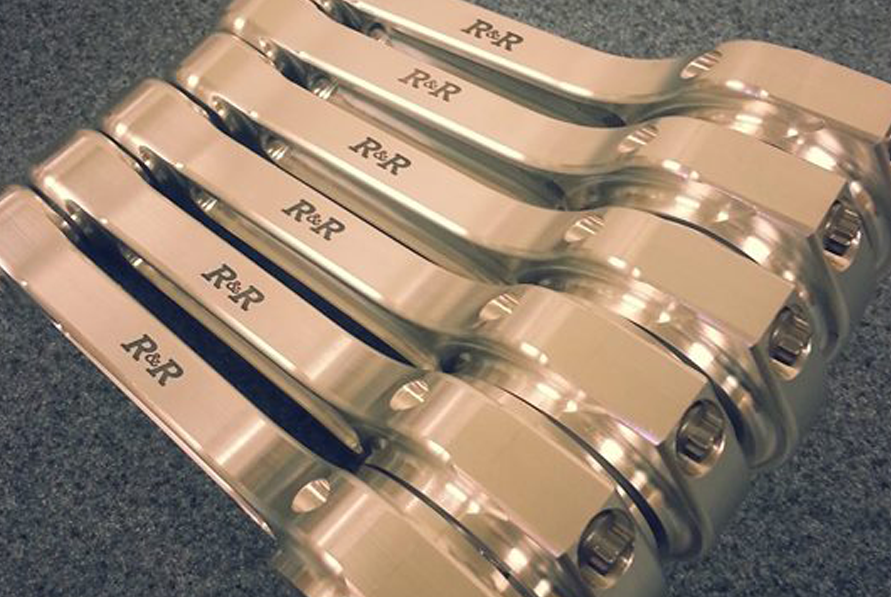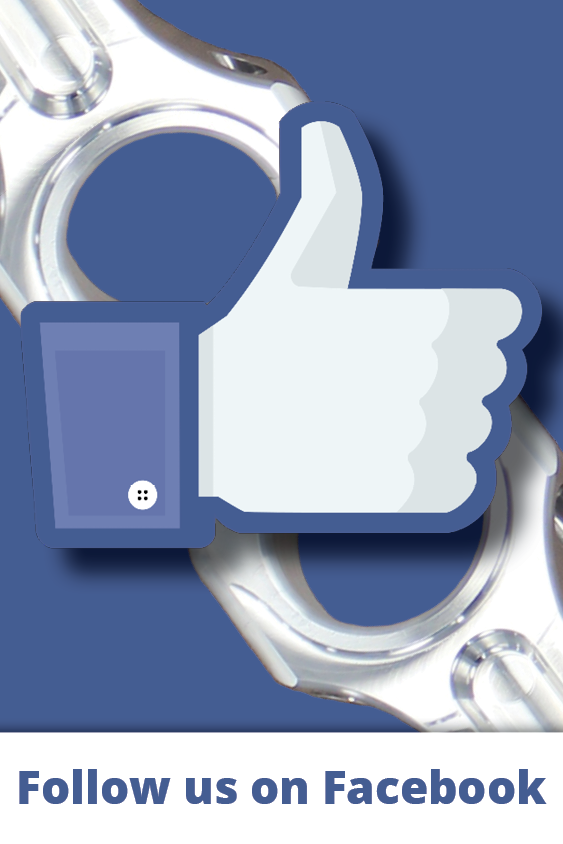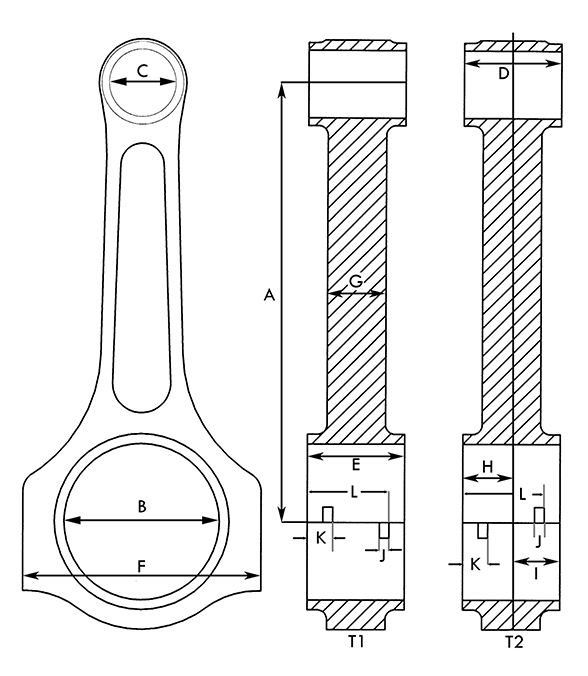Rod Installations
INSTALLATION INSTRUCTIONS FOR ALUMINIUM CONNECTING RODS
- Correct Clearances
- Use plastigage or micrometers to obtain a minimum of .0025″ bearing clearance.
- Side clearance for each pair of rods should be .020″ -.060″ for rods sharing a journal.
- Side clearance for single rod per rod journal should be between .012″-.035″
- Minimum clearance for wrist pins should be .0007″
- Lubricants and Torquing
- Clean, and check rods well for debris. Apply 50W oil to threads, and under head of bolt, then stretch per table A below. Do not use anti seize, or moly lube. Measure the rod bolt loose, then progressively tighten to the appropriate stretch recommended, not to exceed the torque figures below.
(Table A)
-
TYPE OF BOLT RECOMMENDED STRETCH TORQUE DO NOT EXCEED 1/4” BLACK OXIDE No stretch figures 150 INCH POUNDS 5/16” ARP 2000 .0057-.0061” 33 FOOT POUNDS 5/16” CUSTOM AGE .0062-.0066” 42 FOOT POUNDS 3/8” ARP2000 .0055-.006” 65 FOOT POUNDS 3/8” L19 .0065-.007” 75 FOOT POUNDS 7/16” 8740 .005-.0055” 75 FOOT POUNDS 7/16” ARP2000 .0055-.006” 80 FOOT POUNDS 7/16” L19 .0062-.0068” 90 FOOT POUNDS 7/16” Custom Age 12mm L19 Hybrid
.0062-.0068” .0072-.0077″
90 FOOT POUNDS 125 FOOT PUNDS
- Rotating Clearances
- A minimum of .060-.080″ should be kept between all obstacles such as cam, pan rails, etc. (only cut on rods as a last resort—this is highly not recommended)
- Maintenance
- Never re-torque rods when they are hot. Do not replace rod bolts in a used rod.
- Heavy chamfer side of rod always goes towards cheek side of the crankshaft.
- Chamfered I.D. of washers must go toward head of rod bolts.
- Check serrations for burrs. If necessary, repair with small jewelers file.
INSTALLATION INSTRUCTIONS FOR STEEL CONNECTING RODS
- Correct Clearances
- Approximate bearing clearance is .001″ per inch of rod journal diameter unless otherwise specified by original equipment manufacturer.
- Lubricants and Torquing
- For all rod bolts, both under head and threads should be lubricated with included ARP moly assembly lube (steel rods only)
- The preferred torquing method is to measure rod bolt stretch, as shown in Table B below. Measure the rod bolt length loose, then progressively tighten to the appropriate stretch recommended, not to exceed the torque figures below.
(Table B)
| TYPE OF BOLT | RECOMMENDED STRETCH | TORQUE DO NOT EXCEED |
|---|---|---|
| 1/4″ CUSTOM AGE | .004-.006″ | 275 INCH POUNDS |
| 5/16″ ARP 2000 | .0057-.0061″ | 28 FOOT POUNDS |
| 5/16″ CUSTOM AGE | .0062-.0066″ | 32 FOOT POUNDS |
| 3/8″ ARP 2000 | .0055-.006″ | 47 FOOT POUNDS |
| 3/8″ L19 | .0065-.0070″ | 65 FOOT POUNDS |
| 3/8″ CUSTOM AGE | .006-.0064″ | 55 FOOT POUNDS |
| 7/16″ ARP 2000 | .0055-.006″ | 75 FOOT POUNDS |
| 7/16″ CUSTOM AGE | .006-.0065″ | 88 FOOT POUNDS |
| 1/2″ L19 | .0083-.0087″ | 130 FOOT POUNDS |
- Additional notes
- Pin fit may be required. < 0.750″ diameter require .0010″-.0016″ clearance ; 0.751-1.100″ require .0012″-.0020″ clearance. Larger pins require more clearance.
- Rotating assembly should be blueprinted to ensure there are no interference issues.
- Use engraving or etching tool for numbering matching rods and caps, not stamps.
- If any rod bolts permanently stretch after installation or engine has been over-revved, rod bolts should be replaced.




